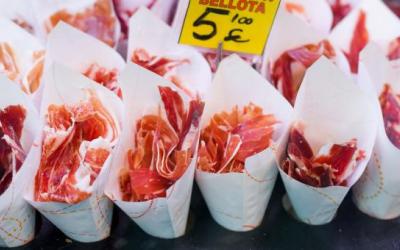How do protected proteins work in cattle diets?

For example, diet can regulate the amount of protein and amino acids entering the small intestine of cows. Thereby increasing the efficiency of protein transformation and reducing its breakdown in the forestomach.
The protein obtained during the transformation process in the rumen does not supply the animal with all the amino acids in the quantity necessary for animal growth and increased MILK production. Therefore, the higher the rate of breakdown and digestibility of protein, the lower the quality of feed.
The protein that is broken down in the rumen is part of the crude protein of the feed. it is separated from the feed in the forestomach of ruminants under the action of natural enzymes involved in digestion.
The depth of this process depends on the physical and chemical properties of the compounds. This indicator differs greatly from one food to another. For example, if there are a lot of proteins broken down in the rumen, most of the released amino acids are easily used by the rumen microflora. Accordingly, much less of them enters the small intestine.
By subjecting feed raw materials to special processing, it is possible to successfully influence the solubility of protein in the rumen so that most of it enters the intestines.
Protected protein is a protein that is not broken down in the rumen and moves to the intestines without significant changes, where it is broken down into amino acids.
The use of protected proteins in cattle diets increases the duration of their economic use. In addition, the milk productivity of animals increases, and an increase in the mass fraction of protein is observed in milk .
The positive effect of protected proteins on reproductive function in cows has also been proven. Practice shows that thanks to their use, this problem can be solved even with a reduction in the use of compound feed.
The use of this knowledge in feeding makes it possible to increase the pool of metabolic protein, which is digested and absorbed in the small intestine and is used by the animal to produce milk and maintain life. When protected proteins are included in the diet, the metabolic protein pool increases and is made up not only of endogenous protein - which itself is present in the animal's body, but also of microbial and non-degradable protein in the rumen.
Read together with it:
- США могут стать вторым по величине рынком сбыта парагвайской говядиныДоктор Хосе Карлос Мартин Камперчиоли, президент Национальной службы здоровья и качества животных (Senacsa), рассказал о производстве мяса на экспорт в нашей стране. Ожидая окончательного заявления от Тайваня, он сообщил, что в настоящее время существует 101 рынок, заявив, что к 2025 году США станут для страны вторым по значимости рынком. Он пояснил, что внутренний рынок несколько напряжен из-за с...
- Калининградская область заинтересована в обмене опытом с Беларусью в мелиорации и закупке техники1 октября, Минск. Калининградская область заинтересована в обмене опытом в мелиорации и закупке белорусской техники. Об этом заявил губернатор Калининградской области Алексей Беспрозванных на 20-м заседании Белорусско-Российского совета по долгосрочному сотрудничеству областей, министерств, органов государственного управления Беларуси с Калининградской областью России, которое прошло в Совете Мини...
- New video on our channel: Who produces more horse meat: Mugalzhar, Zhaba, or Novoaltaisk? A test slaughter revealed the truth.A test slaughter and deboning of crossbred horses of three breeds: Mugalzhar, Zhaba, and Novoaltaisk. All stallions are young, 30 months old, taken directly from the herd. The main goal of the test slaughter is to determine which crossbred produces the most MEAT and is the most profitable for business. Kazakh culinary traditions, meat testing, slaughter yield, and meat productivity are discussed. ...
- В ОАО "Святая Воля" в Ивацевичском районе за полгода выручка на каждого работника составила Br98 тыс.Владимир Любушак 26 сентября, Минск. ОАО "Святая Воля" - динамично развивающееся предприятие Ивацевичского района с выручкой от реализации на каждого работника Br98 тыс. Это результат первой половины 2025 года, сообщил в интервью журналу "Экономика Беларуси" директор акционерного общества Владимир Любушак.Угодья хозяйства раскинулись на более чем 1......



























































